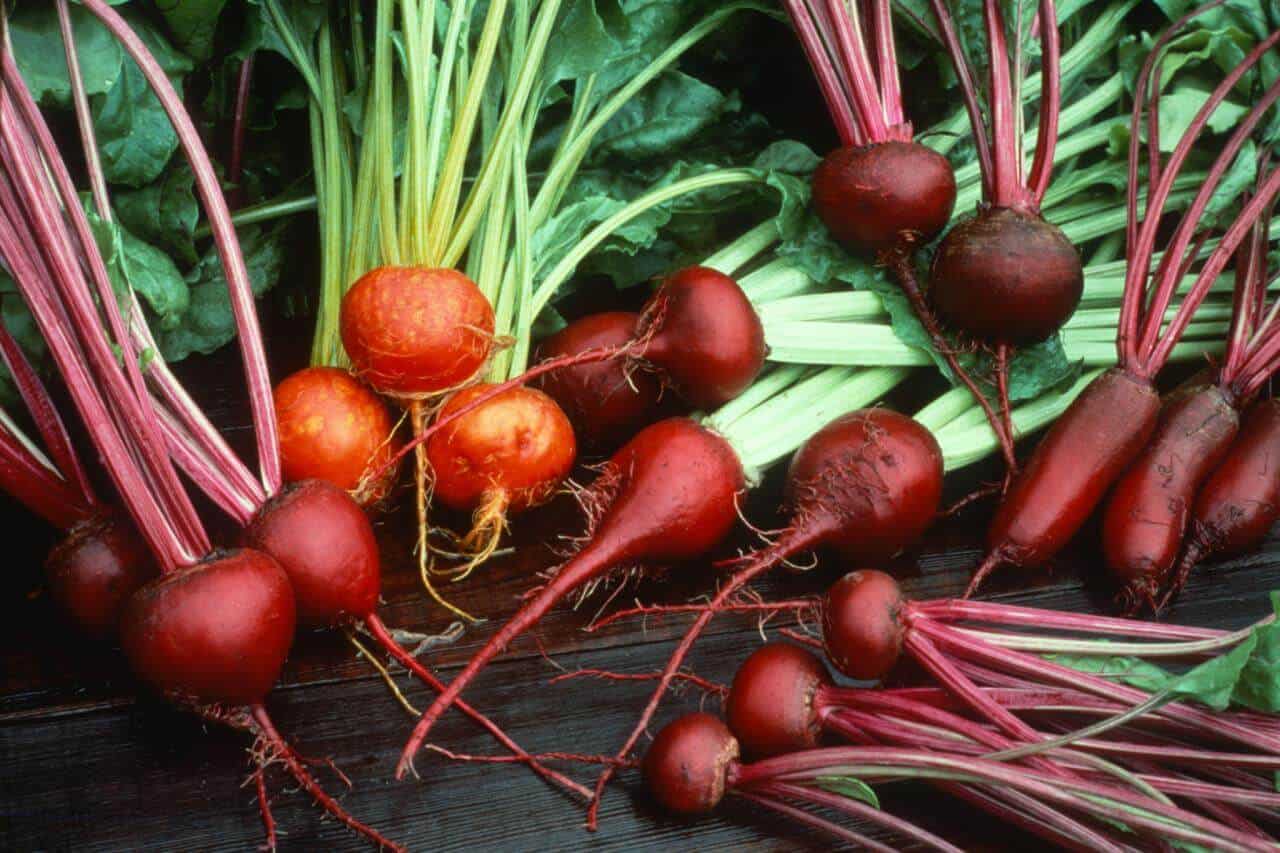Are you a beet lover who wishes to have a fresh rather than a canned beet? Well, I was just like you before learning about the different types of beets that I could easily grow on my own.
Having a sense of how it feels like not knowing what to go for or, getting it wrong most of the time, I was compelled to look for more information about beets.
And by that I mean, different aspects that would make me identify and choose one over the other e.g. colour, shape, flavour, maturity rate and, much more.
While doing all this, I learned that beets can be put into various categories. Examples; Red beets, Cylindra beets, golden beets, striped beets and many others like you will see in this article.
Beets (Beta vulgaris), are herbaceous biennial root vegetables in the family Chenopodiaceae grew for their edible root.
The beet plant is usually erect with a long main root and a rosette of oval leaves growing on stems. They’re one of the easiest vegetables to grow and are usually grown as annuals (harvested after one growing season).
The roots of a beet are a good source of vitamin C and maybe pickled for salads or cooked whole, then sliced or diced.
On the other hand, the beet tops are an excellent source of vitamin A and are mostly cooked or served fresh as greens
Beets are also referred to as beetroot, garden beet or spinach beet.
With the above basics on beets, let’s look at the best easy-to-grow types of beets for your kitchen garden.
8 Types of Beets for Your Garden
1. Red Beets
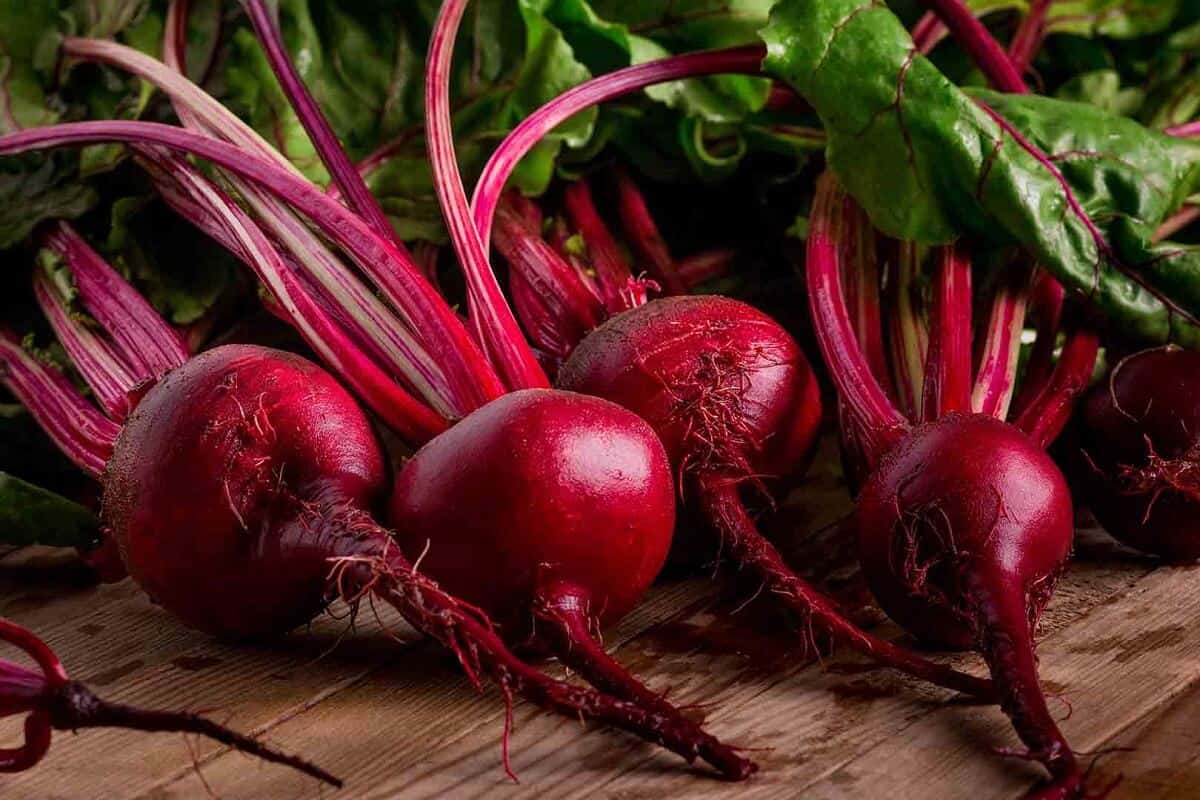
The red beets are popular with most people around the world and are considered the most flavourful of all beet varieties. They’re hence dedicated mostly to human feeding.
Their consumption and popularity are also attributed to their anti-cancerous properties.
These beets contain a rich amount of flavonoids mainly from the red pigment (betaine) which helps at inhibiting and preventing the growth or appearance of cancerous tumors.
Examples of red beet varieties include;
Detroit Dark Red Beets
This is the most popular variety of all red beets known for its’s fast growth rate (approximately 60 days).
It’s a great storage heirloom beet with good-sized, deep-red roots. Moreover, the roots of a Detroit dark red beet are rounded with smooth skin.
They are sweet, mild, and tender, and are ideal for canning, roasting, and slicing raw in salads.
On the other hand, the tops of this variety consist of tender and flavorful, dark-green leaves and, bright red stems and veins. These are mostly used to add colour to salads.
This variety was first introduced in 1892 by D. M. Ferry Seed Company as ‘Detroit Dark Red Turnip’ (but, it’s an heirloom beet variety)
Red Ball Beets
The Red Ball is also known as ‘Burpee’s Red Ball’. It’s an heirloom beet cultivar with sweet, mild, red flesh and deep purple, smooth skin. The uniformly round roots of a red ball are approximately 3 inches and ready for harvest in about 60 days.
It produces large tasty greens that can be harvested young for use in sautés, salads and, stir-fries.
Boro Beets
Boro Beets are smooth, dark-red beets with uniform round baby beets that mature in 50 days.
Another good thing about these beets is that their roots can grow up to 6’’ in diameter without turning woody even when left to mature further.
So, if you’re looking for a beet variety for winter food storage, then ‘Boro’ is the way!
Ruby Queen Beets
Ruby Queen is a fast-maturing beet variety (55 days) with short tops that are approximately 10 inches in height.
This beet has perfectly round, two to three-inch deep-red roots that are sweet and mildly flavoured and are suitable for canning.
It’s also an easy-to-grow root vegetable and can thrive even in poor soils. A reason why it’s very common and an excellent choice for a majority of gardeners.
Early Wonder Tall Top Beets
These are quick maturing deep red beets that grow rapidly and mature in just 45 days.
The Early Wonder Tall Top Beets produce globe-shaped roots about 2 to 3 inches. Their taproots are and this makes them a great choice of beets for growing in containers.
The greens are tall red stalks with deeply red-veined glossy green foliage.
Crosby Egyptian
This is an heirloom beet cultivar that originated in Germany and was brought to the US in the 1860s as ‘Egyptian Beet’.
It was developed by a market gardener, Josiah Crosby in Boston. In 1880, the ‘Crosby Egyptian’ appeared for the first time in James Gregory’s seed catalogue.
The roots of a Crosby Egyptian have a flattened shape and a sweet flavour. Its tops are green with red stems and are mostly used in salads or sautéed as mature greens.
‘Crosby Egyptian’ is a fast-maturing beet (55 days). It’s also cold-tolerant hence an ideal choice if you’re a northern gardener looking for an early fall crop.
2. Golden/yellow Beets
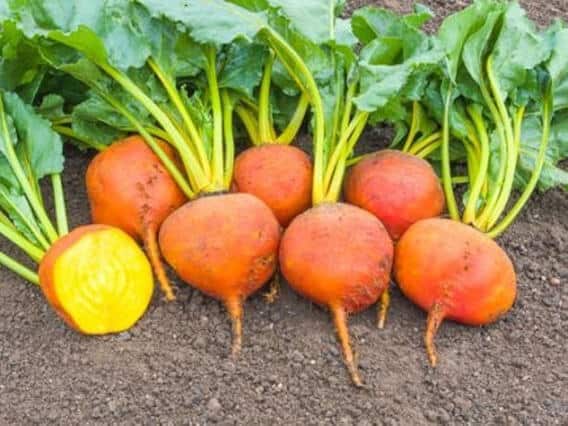
The golden beetroot was first introduced in the 1820s.
They are a variety of beets that are similar to their red counterparts with the main difference being colour. Golden beetroots are also a bit milder in taste and have less sweetness than red beets.
They’re hence a great choice when introducing beets to your family.
Examples of golden beets include;
Burpee’s Golden Beets
The Burpee’s Golden’ is a sweet, mild flavoured heirloom beet with an inviting orange colour. This beet produces attractive globe-shaped, orange-yellow roots that turn a golden yellow colour when cooked.
The leaves of a burpee golden are light green and can be steamed or used raw in mixed salads.
It takes about 55 days to reach maturity.
Golden Detroit Beets
This is another type of gold/yellow beet and is considered the original gold beet variety. Its roots are smaller as compared to other beet varieties and it’s quite flexible in many different uses in the kitchen.
The golden Detroit takes approximately 55 days to mature for cooking or use in salads.
3. Striped Types of Beets
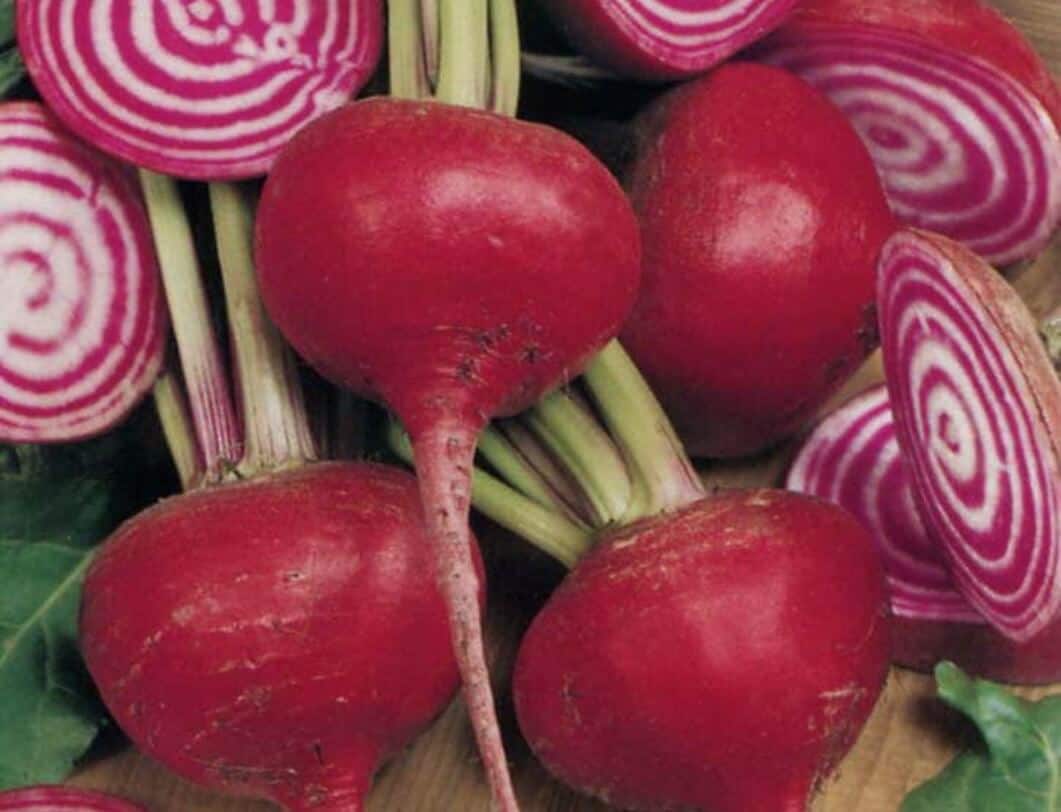
Stripped beets were first cultivated in a small fishing village in Northern Italy in the early 1800s. These heirloom beets later made their way into America in the 1840s.
The name ‘’stripped’’ results from the candy-cane-like stripping/patterns in the interior of the vegetable. That’s why they are sometimes called the ‘Bull’s Eye Beet’ or the ‘Candy Stripe Beet’.
Examples of striped beets are;
Chioggia/Bassano Beets
An heirloom beet with striking deep pink and white spirals that add a beautiful colour pop to salads and soups. This beet is sweet and has a mild flavour plus, it doesn’t ‘bleed’ as much as regular beets.
These beets are either eaten raw in a fresh salad or, roasted or steamed.
You can also use pickle them for a burst of flavour either as a main salad or, alongside the main dish.
Chioggia Guardsmark Beet
This is an improved strain of Chioggia Beets. The Chioggia Guardsmark Beets are bred to produce a classic pink-and-white bull's eye interior and uniform-sized beets with a flattened round root shape.
Their fresh is mild, tender and slightly sweet.
4. Cylindra Beets
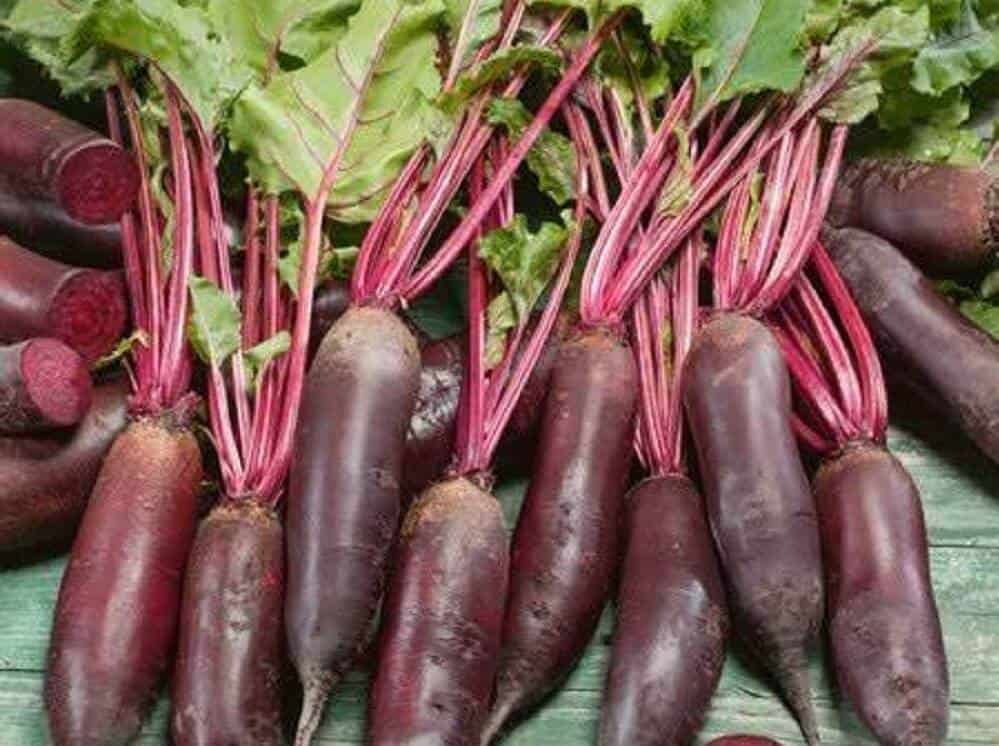
Cylindra beets are Danish heirloom beet varieties that date back to the 1880s.
Their shape is more of a carrot than a beet. Some people call them ‘Formanova’ and others ‘Butter Slicer’.
These beets take about 60 days to mature and measure approximately 6 to 9 inches long. Their elongated roots have a smooth skin and deep red flesh with a sweet, mild flavour hence, ideal for pickling and canning.
The tops (leaves) of Cylindra beets are reddish-green and are slightly bitter when eaten raw (better to avoid raw). In about 35 days, the tops are usually ready for harvesting.
The Cylindra beets take less space hence, an excellent choice for a small garden.
5. Mangel-wurzel Types of Beets

Source: theseedcollection.com.au
The Mangel-wurzel Beets are also known as mangold beets. These beets were historically grown as livestock fodder but nowadays, gardeners are growing them for their sugary taste.
The shape of mangel-wurzel beets is more like a cross between a beet and a carrot or, like a turnip.
Varieties of mangel-wurzel beets include;
Mammoth Red Mangel Beet
These are massively large red beets that can reach about 20 pounds and are 6 feet long.
The Mammoth Red Mangel Beets take approximately 100 days to mature but, the majority of gardeners prefer to harvest them slightly earlier when the beets are relatively smaller.
As they have found the flavour to be better as opposed to the fully matured beets.
You can use these beets both for human and livestock consumption.
Yellow Cylindrical Beet
Another one of the Mangel-wurzel beets. It’s a European heirloom beet variety with a golden-yellow hue and a sweet flavour. This beet variety takes approximately 55 days to mature.
Apart from not leaving stubborn stains on your table cloths and fingers, the Yellow Cylindrical Beet is an all-round beet and can be used in salads, as well as be roasted, grilled, shredded, boiled, or coated in vinegar or oil.
6. Sugar Beets

Sugar beets are typically grown for commercial purposes. They look like turnips rather than beets and they are mostly off-white. Their root structure is conical.
The reason why most people don’t consume these types of beets is that the sucralose level is too high.
That’s why approximately 20% of the world’s sugar production is from beets. Although, you can grow the sugar beets for greens as their flavour is similar to that of Swiss chard or spinach.
Sugar beets grow easily from beet seeds in a wide range of soils ranging from heavy clay to sandy loam.
Mature sugar beet can weigh up to 2kgs with approximately 8 to 22% sucrose by weight.
7. Hybrid Beet Varieties
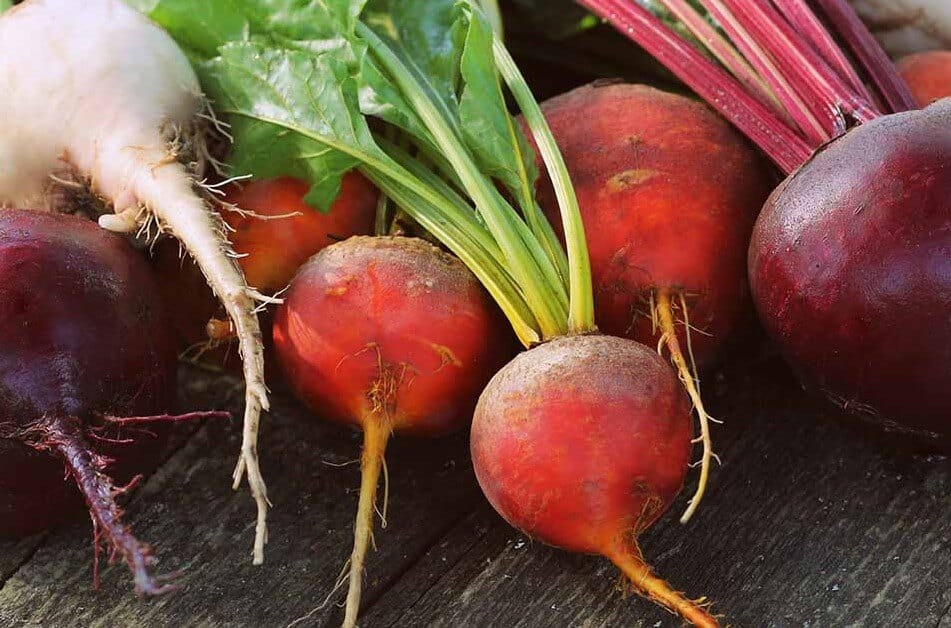
Source: thefarmwoodbury.com
Red Ace
Red Ace is an F1 hybrid beet variety that’s fast-maturing and can adaptable to a wide range of soil conditions provided that the soil is well-drained. It’s also more cold-tolerant than most other cultivars.
The Red Ace is a vigorous grower and takes about 53 days for its smooth-skinned, deep purple, three-inch roots to show through the soil’s surface.
Merlin
This is another one of the red-rooted beets and I were to mention, it’s one of the sweetest reds out there!
Merlin’ is an F1 hybrid cultivar bred to meet a higher sugar content, more disease resistance, and both heat and cold tolerance levels higher than any other red variety. This makes it an easy-to-grow vegetable even for beginners.
According to the Beet Variety evaluation, Merlin is ranked as one of the best beet varieties for greens alongside Red Ace.
The beet consists of 3 to 4 inch perfectly round roots that take about 55 days to mature. Its tops are glossy and dark green plus, they’re delicious.
In just about 3o days, the crimson-stemmed greens are ready for consumption.
Touchstone Gold Beet
This is a popular golden hybrid variety with bright-yellow skin. It has a smooth deep-orange skin that’s sweet and mild when eaten raw or cooked.
The roots of a Touchstone Gold Beet mature in approximately 55 days to reach about 3’’and, they clear concentric rings when cut.
Its tops are light green with yellow stems. The tops are tender and are mostly used in stir-fries and salads.
Moulin Rouge
The ‘Moulin Rouge’ is a hybrid beet cultivar with deep magenta roots that are enjoyed both fresh or cooked.
It consists of 1 to 2’’ globes with a succulent texture and, sweet and rich flavour.
In just about 35 days, you can harvest the baby roots, or you can leave them in the ground for 50-60 days if you prefer the mature roots.
Warrior
The ‘Warrior’ is a newer beet hybrid characterised by a lovely deep red colour both in and out. These beets are tender and sweet and take approximately 50-60 days to mature.
Its roots are smooth and globe-shaped while the tops are green and tinged red.
8. Miniature Types of Beets
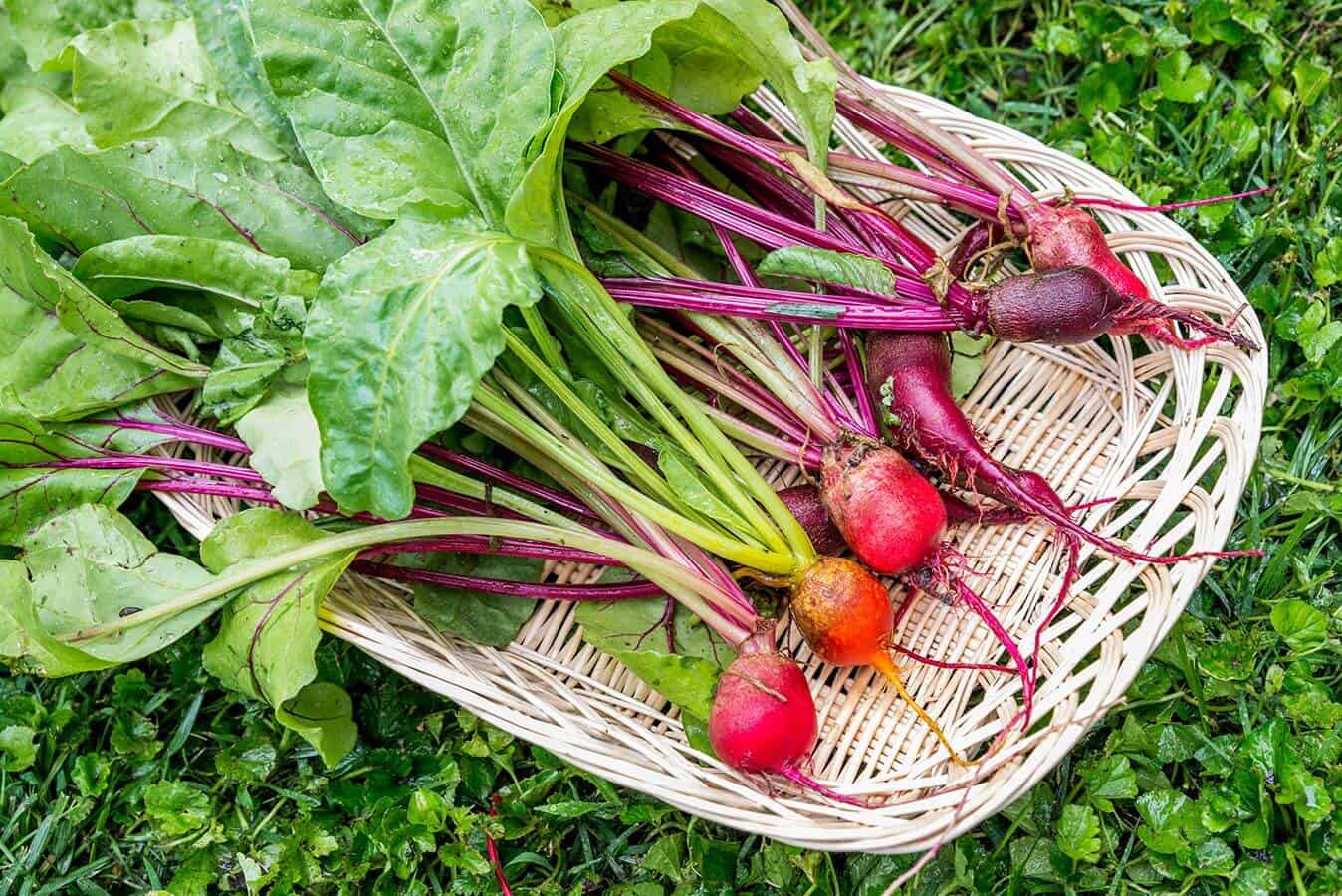
The miniature beets consist of small and perfectly round beets that measure less than 2inches in diameter.
Examples of such beets include; the ‘baby beat’ and the ‘little ball’
Conclusion
Those have been the different types of beets that you can have in your garden.
And like you have seen, you don’t have to rely on grocery stores to enjoy a beet-incorporated meal.
In addition to this, having some beets in your garden enables you to have freshly squeezed beet juice to stimulate your brain as you eliminate toxins from your body without much hustle.
Plus, beetroots have rejuvenating properties and are rich in carbohydrates which are good at keeping you energetic and feeling young for long.
Isn’t that what each one of us wants?
